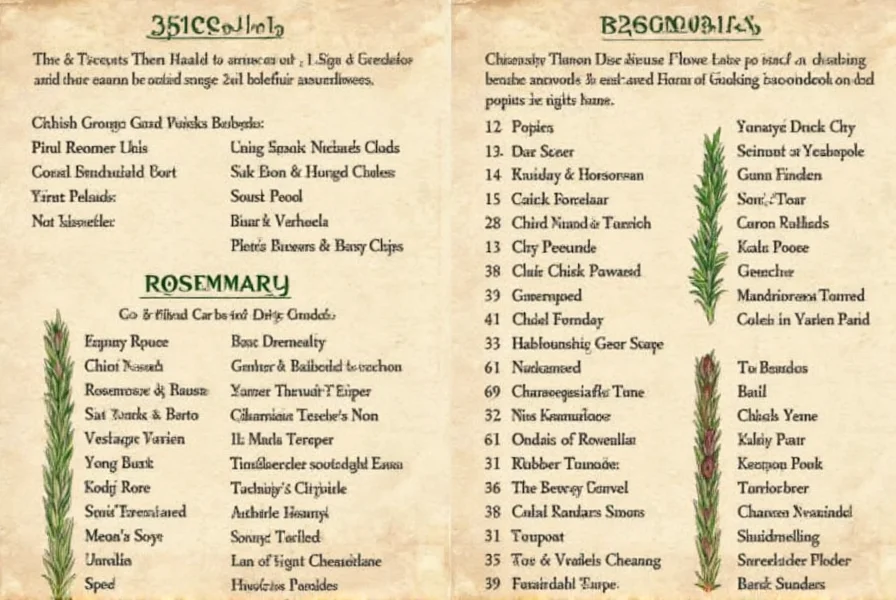Rosemary dry is a concentrated form of the rosemary herb (Rosmarinus officinalis), dried to preserve its flavor and aroma. It's widely used in cooking for meats, vegetables, and oils, offering a strong pine-like scent and earthy taste. This guide provides direct answers to your questions about using, storing, and buying rosemary dry for optimal culinary results.
Uses and Applications
Rosemary dry is incredibly versatile and can be used in a wide range of culinary applications. Here are some common ways to incorporate it into your cooking:
- Roasting meats: Sprinkle rosemary dry over chicken, lamb, or pork before roasting to add a rich, savory flavor.
- Cooking vegetables: Add a pinch of rosemary dry to roasted potatoes, carrots, or Brussels sprouts for a burst of freshness.
- Infusing oils and vinegars: Place rosemary dry in a jar with olive oil or white vinegar and let it sit for a few weeks to create a flavorful infusion.
- Baking: Use rosemary dry in breads, cookies, or pastries for a unique twist on traditional recipes.
- Seasoning blends: Mix rosemary dry with other herbs like thyme, oregano, or sage to create a custom seasoning blend.
According to the USDA Food Safety and Inspection Service, rosemary dry retains its antioxidant properties even after drying, making it a healthy choice for everyday cooking.
How to Store Rosemary Dry
To maintain the quality and flavor of rosemary dry, it’s important to store it properly. Here are some tips for long-term storage:
- Airtight container: Keep rosemary dry in a sealed glass jar or metal container to prevent exposure to air and moisture.
- Cool, dark place: Store the container in a cool, dark cupboard or pantry away from direct sunlight and heat sources.
- Label and date: Always label the container with the name and date of purchase to keep track of freshness.
- Freezing: If you have a large quantity, you can freeze rosemary dry in small portions to extend its shelf life.

When stored correctly, rosemary dry can last up to two years without losing its potency. However, it’s best to use it within six months for optimal flavor.
Buying Guide
If you’re looking to buy rosemary dry, there are several factors to consider to ensure you get the best quality for your money. Here’s a detailed guide to help you make an informed decision:
Features
High-quality rosemary dry should have a strong, pleasant aroma and a deep green color. Avoid products that look faded or have a musty smell, as these may be old or poorly stored.
Advantages
Rosemary dry offers several advantages over fresh rosemary. It’s more convenient to store, has a longer shelf life, and is easier to measure in recipes. Plus, its concentrated flavor means you don’t need to use as much as you would with fresh herbs.
Use Cases
Rosemary dry is ideal for a variety of cooking situations, including:
- Roasting meats and vegetables
- Infusing oils and vinegars
- Seasoning grilled foods
- Creating homemade spice blends
Target Audience
Rosemary dry appeals to both amateur cooks and professional chefs who want to enhance their dishes with a touch of herbal sophistication. It’s also a favorite among health-conscious individuals, as rosemary is believed to have antioxidant and anti-inflammatory properties.
Suitable Occasions
Rosemary dry is perfect for everyday cooking, holiday meals, and special occasions. Whether you’re preparing a simple weeknight dinner or a festive feast, this herb adds a subtle yet powerful flavor that elevates any dish.
Practical Tips for Using Rosemary Dry
Here are some practical tips to help you get the most out of rosemary dry in your cooking:
- Use it sparingly: Rosemary dry has a strong flavor, so start with a small amount and adjust to taste.
- Combine with other herbs: Pair rosemary dry with thyme, oregano, or basil for a balanced, complex flavor profile.
- Toit for extra flavor: Lightly toast rosemary dry in a dry pan before using it to release its oils and enhance its aroma.
- Add it at the right time: For the best results, add rosemary dry toward the end of the cooking process to preserve its delicate flavor.
- Experiment with different forms: Try using rosemary dry in teas, cocktails, or even desserts for a unique twist.

One of the most exciting aspects of rosemary dry is how easily it can be incorporated into new and creative recipes. Don’t be afraid to experiment with different combinations and techniques to discover your own signature style.
Frequently Asked Questions
How long does dried rosemary last?
When stored properly in an airtight container away from light and heat, dried rosemary maintains peak flavor for about six months. While it remains safe to use for up to two years, its aromatic oils gradually diminish over time, resulting in less potent flavor.
What's the substitution ratio for fresh to dried rosemary?
Use one-third the amount of dried rosemary when substituting for fresh. Since the drying process concentrates the herb's oils, 1 teaspoon of dried rosemary equals approximately 1 tablespoon of fresh rosemary. Always start with less and adjust to taste, as dried rosemary has a more intense flavor.
Does dried rosemary have health benefits?
Yes, dried rosemary retains the antioxidant and anti-inflammatory compounds found in fresh rosemary, including rosmarinic acid and carnosic acid. These compounds may support cognitive function and provide cellular protection. The drying process concentrates these beneficial compounds while removing moisture.
When should I add dried rosemary during cooking?
For soups, stews, and braises, add dried rosemary early in the cooking process to allow its flavors to infuse. For roasted meats and vegetables, sprinkle it during the last 15-20 minutes of cooking. For sautéed dishes or finishing oils, add it in the final 5 minutes to preserve its delicate aromatic compounds.
Can I revive stale dried rosemary?
Lightly toasting stale dried rosemary in a dry skillet over low heat for 1-2 minutes can help revive some of its aroma by releasing residual essential oils. However, if the herb has lost its color or developed a musty smell, it's best to replace it, as the flavor compounds have likely degraded significantly.
How much dried rosemary equals one fresh sprig?
One fresh rosemary sprig (about 3 inches long) is equivalent to ¼ teaspoon of dried rosemary flakes or ⅛ teaspoon of dried rosemary powder. This conversion accounts for the concentration of flavor that occurs during the drying process.










 浙公网安备
33010002000092号
浙公网安备
33010002000092号 浙B2-20120091-4
浙B2-20120091-4